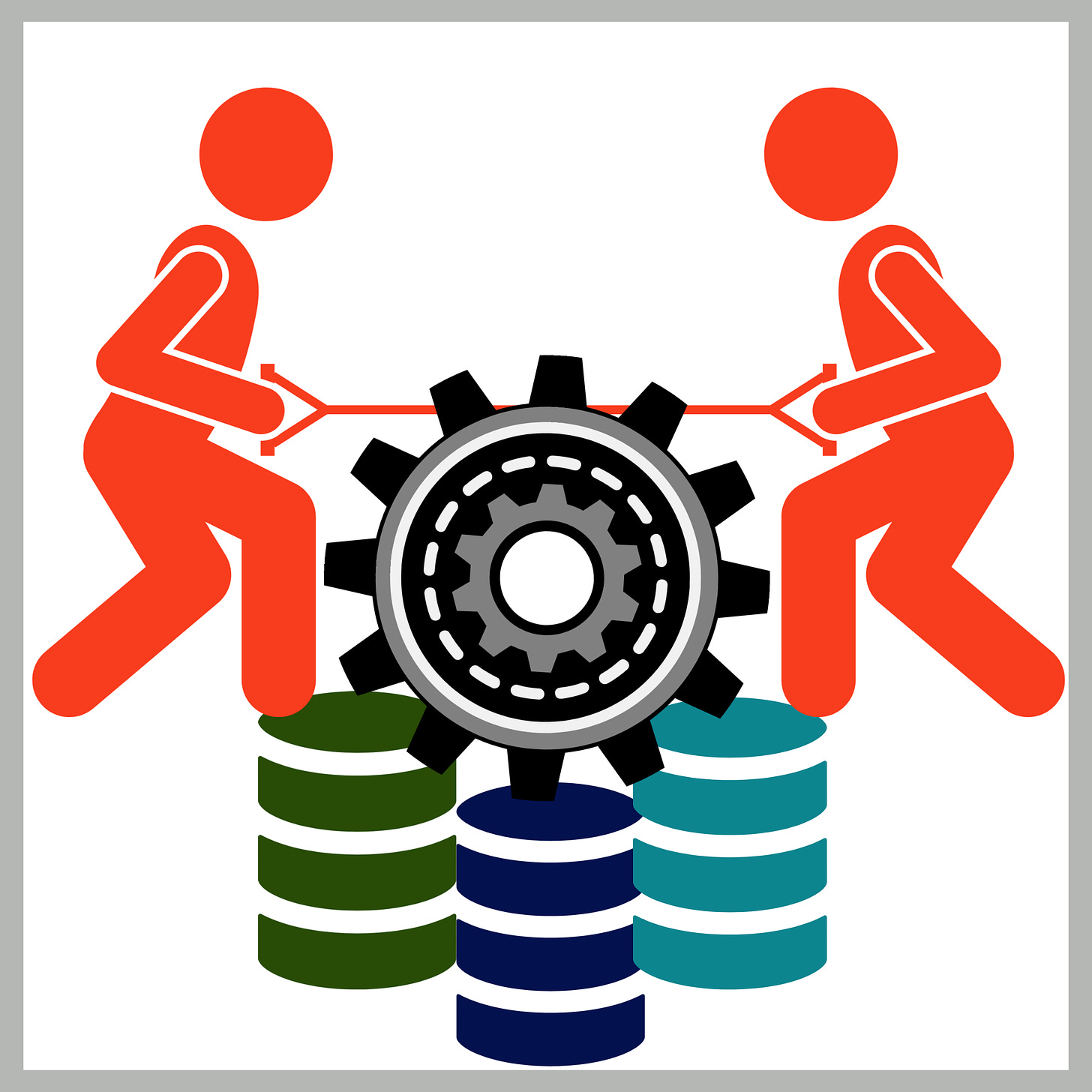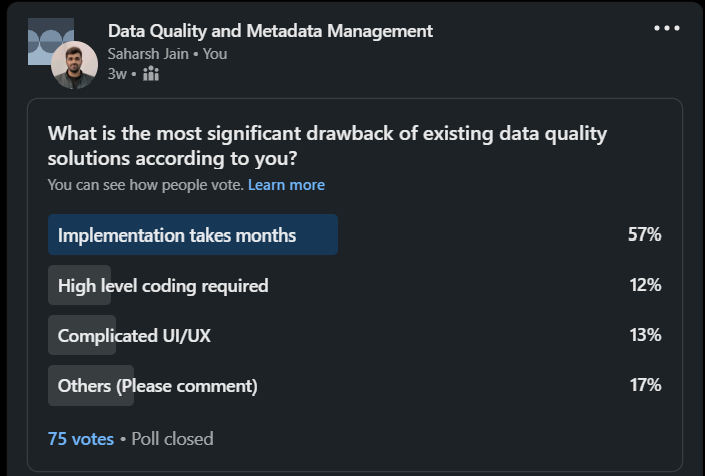Data Quality Measurement and Improvement

Why is Measuring Data Quality Important?
Data is the lifeblood of any organization. However, just like any other vital substance, it needs to be healthy and pure to ensure smooth functioning. Inaccurate, inconsistent, and unreliable data can lead to disastrous consequences, including incorrect business decisions, compliance breaches, and reputational damage. Therefore, it's crucial to measure, monitor, and improve the data quality continuously.
Data Quality Measurement Challenges
Like the classic mistake of measuring the mountains' heights using a measuring tape, relying on manual and ad-hoc methods to measure data quality is not the right way. It may involve climbing the mountain, navigating difficult terrain, and manually measuring the height of the mountain. The process can also be prone to errors due to the need for precise measurements over a large distance, making it difficult to get accurate and reliable results.
Similarly, when it comes to data quality, using tools or data quality solutions that require a lot of manual rule creation, have a complicated user interface (UI/UX), or require long implementation times can be challenging. These tools may require significant resources and time to set up and use effectively, which can delay the process of obtaining accurate and reliable data. Additionally, if the tools are too complicated or difficult to use, they may lead to further errors or inaccuracies in the data.
Data quality solutions also called data quality application or data quality tools, are software solutions that automate the process of measuring, monitoring, and improving data quality. They use various techniques and algorithms to assess data against predefined rules, standards, and criteria.
These applications can help organizations achieve consistent and reliable data across the enterprise. However, implementing and using these applications can be challenging.
Data Quality Solutions- Challenges and Drawbacks
I recently conducted a poll on LinkedIn with the question,
“What is the most significant drawback of existing data quality solutions according to you?”
The poll results and comments received highlighted some of the challenges and pitfalls of current data quality applications.
The poll results show that 59% of respondents find the implementation of data quality solutions to be a time-consuming process. This is because implementing data quality applications requires careful planning, coordination, and execution across multiple teams and departments.
Organizations need to define their data strategy, identify key stakeholders, allocate resources, and establish governance and accountability frameworks. Furthermore, they need to configure the data quality solution to suit their specific needs, integrate it with other systems, and ensure data security and privacy compliance. In summary, it takes a lot of time to see actual benefits of using a data quality solution and the concept of “instant ROI goes for a toss”.
This approach is also ineffective as such methods only solve the problems based on the problems known. What about the data quality issues that are still lying unknown?
12% of respondents stated that high-level coding is required to use data quality solutions. This highlights the technical expertise required to use these tools. Users need to have a good understanding of data management, data modeling, and programming languages.
But what if I’m a Manager and don’t know how to code? This increases the timelines for solving problems and taking a toll on the motivation of ultimate decision makers.
11% of respondents see complicated UI/UX as a challenge when using data quality solutions. This highlights the importance of user experience design in data quality solutions. Users need to be able to use the application's features and functions intuitively and efficiently. A simple and well-designed UI/UX can improve user productivity and adoption, as well as reduce training and support costs.
Finally, the comments that were received on the poll highlighted some additional challenges that organizations face when using data quality applications. For example,
MR A highlights the importance of addressing the root cause of data quality issues and not just relying on data quality applications as a cure-all solution.
MR B highlights the challenge of getting people to use data quality applications. This highlights the importance of change management and user adoption strategies.
MR C highlights the importance of taking a holistic approach to data quality management and aligning it with the business strategy. This highlights the importance of executive sponsorship and organizational alignment.
MR D highlights the importance of ensuring that data quality initiatives are driven by business value and not just technology. This highlights the importance of defining and measuring the business impact of data quality improvements.
MR E highlights the challenge of overcoming organizational inertia and resistance to change. This highlights the importance of communication, education, and awareness-raising.
MR F highlights the importance of involving business subject matter experts (SMEs) in defining and validating data quality rules and standards. This highlights the importance of collaboration and domain expertise.
Concluding Thoughts and The Road Ahead
Consider a skilled ship captain navigating through turbulent waters - even with their expertise, they rely on a compass to stay on track and reach their destination efficiently. Similarly, proficient business users require a suitable data quality tool, acting as their compass, to ensure precise data and informed decision-making for their business's triumph.
While data quality solutions are needed to assess and correct data quality issues that have already crept in, they are not complete cure for bad data and several other elements such as (but not limited to) data literacy, training, involvement of business SMEs, managing change, communication, and the suitability of the data quality solution that need to be taken into consideration to ensure good data quality.
This article is a modified version of the article—The Classic Mistake of Measuring a Mountain's Height with a Tape, published on Linkedin in April, 2023.
You may also like the following articles—
Are Data Quality (DQ) Solutions the Cure for Dirty Data?
What Data Quality (DQ) Approach Do I Use To Manage Dirty Data?
Thank you for reading! Take care!
Biography: Saharsh Jain is a seasoned data management professional, presently holding the position of Manager of Customer Success at RoutineAI. He is an MBA in Marketing from IBS Hyderabad, preceded by a Commerce degree from Osmania University. Saharsh is deeply passionate about data analysis, governance, and process improvement, and takes pleasure in both gaining knowledge and educating others in areas such as data quality, architecture, and transformation.





